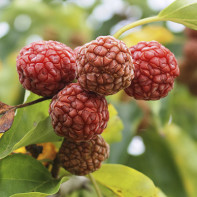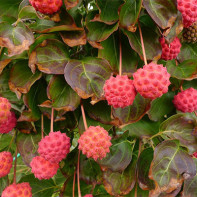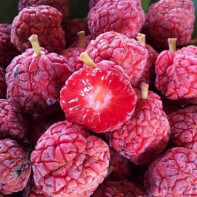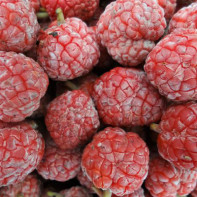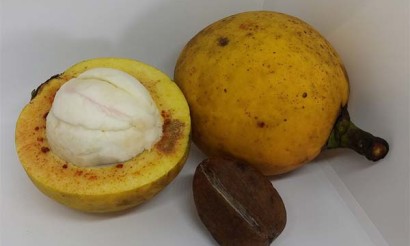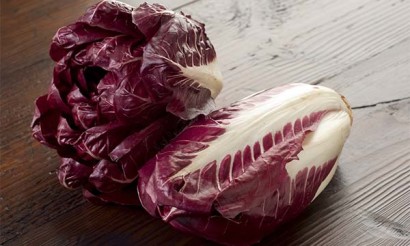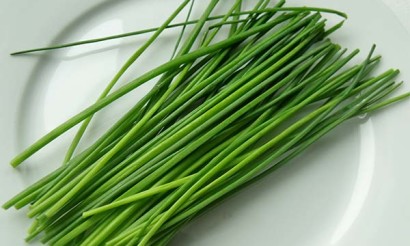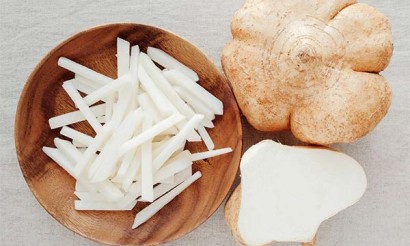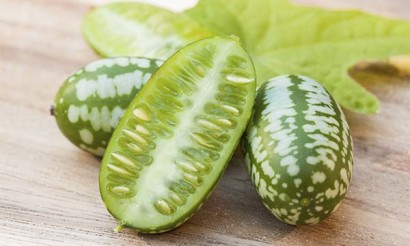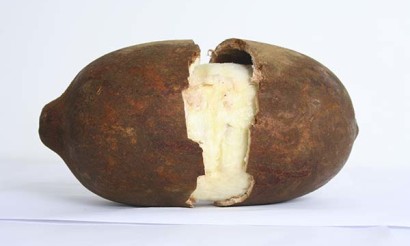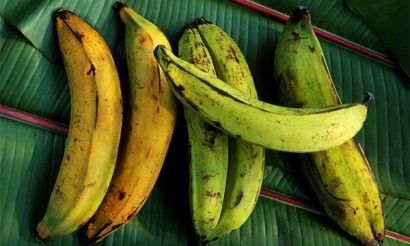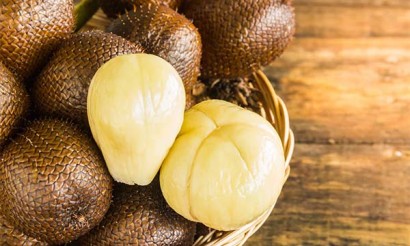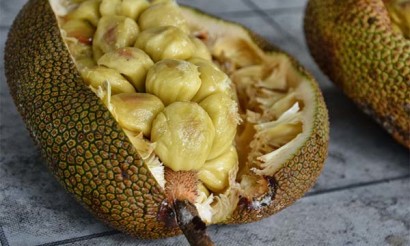Strawberry tree: what kind of fruit is it?
The strawberry tree belongs to the vast mulberry family. The botanical name of the plant is Cudrania tricuspidata (Latin: Cudrania tricuspidata). In Southeast Asia, this species is called kudang, mandarin melon berry, Chinese mulberry (which should not be confused with real mulberry), pingpin tree.
- What this fruit is.
- What it looks like
- Where it grows
- What is the usefulness of the strawberry tree fruit
- What harm it can do
- How to eat strawberry tree fruit correctly
- What can be made from it
- Jam
- Cottage cheese paste
- Milk shake
- Jelly
- Compote
- Panacotta
- Traditional Medicine Applications
- Cosmetic Applications
- How to grow strawberry tree
- Interesting Facts
What is this fruit
The fruit of the kudraniya is a large multi-jointed fruit, similar in structure to raspberries. In the fall, at harvest time, the tree is covered with abundant bunches of red fruit. The round fruits are 2.5-5 cm in diameter.
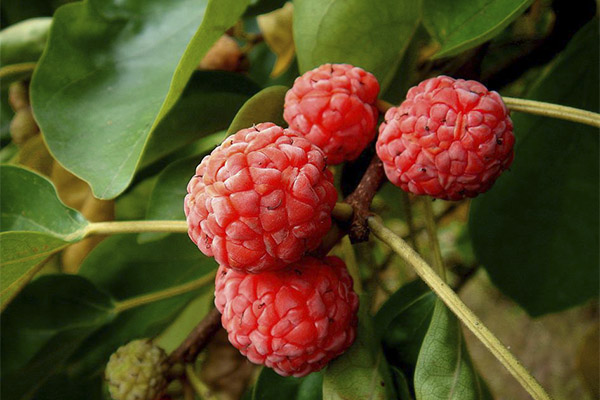
Inside the juicy fruit, covered with delicate skin, are hidden small brown seeds. The taste of the flesh is pleasant and sweet, it does not contain sourness and slightly resembles persimmon and watermelon. The fruit and leaves of the strawberry tree contain a flowing white juice. If you break the fruit, there is a pleasant watermelon aroma.
What it looks like
The strawberry tree is a tall and spreading plant that reaches 6 m in height. Young trees are covered with sharp, long thorns, which eventually disappear. Kudrania belongs to the dicotyledon species, this representative of mulberry trees has female and male trees. Interestingly, the female plants are taller and more powerful than the male plants.
Kudrania is a deciduous tree. Every fall, in November, it loses its lush crown. The leaves of the strawberry tree are elongated and pointed. Already in midsummer, yellowing appears on the green leaves.
The tree flowers in May or early June. Inflorescences grow in the deciduous axils, they can be paired or solitary. Male flowers are up to 5 mm in diameter, female flowers are smaller, their size does not exceed 1-1.5 mm. Flower petals are white or yellowish-white. Pollination occurs when light pollen is carried by the wind. Male trees may produce several female flowers that are also pollinated and bear fruit. Harvest when the leaves turn yellow and begin to fall off. By this time, the fruits will have juiced and become a rich crimson and crimson-red color.
Where to grow
The strawberry tree is native to the tropical and subtropical regions of Southeast Asia. This plant likes sunlight, heat and moderate humidity. Wild kudrania is found in Iran and Afghanistan, in areas with fertile soils. Strawberry tree is cultivated in China, southern Japan, Vietnam and even Nepal. In regions close to the equator, the fruit grows and bears fruit even at 2200 meters above sea level.
Amateur gardeners of Transcaucasia and the south of Ukraine breed Kudrania. Thus, the tree successfully bears fruit in Odessa, on the territory of the Institute of V.P. Filatov, this plant is also in Batumi, in the botanical garden. Strawberry tree is grown in the subtropics of the Russian Federation.
In the countries of the Old World, the strawberry tree arrived relatively recently. Seedlings did not arrive in England and other European countries until 1872. In the United States, kudrania appeared in 1930.
How the fruit of the strawberry tree is useful
The fruit of the strawberry tree is a valuable nutritious fruit, which saturates the body with useful substances and diversifies the menu. In 100 grams of fresh product contains:
- vegetable proteins - 0.8 g;
- carbohydrates - 4.8-5.1 g;
- fats - 0,08-1,0 g;
- fiber - 2,3 g;
- ash substances - 1.1 g;
- water - 83-85 g.
In 100 grams of ripe fruit only 23 kcal. The energy value of the same volume of product - 96.232 kJ.
Strawberry fruit is a source of valuable organic compounds. The fruit contains linoleic, cysteine, myristic acid, arginine, isoleucine, phenylalanine.
The amount of mono- and disaccharides in 100 g of ripe fruit reaches 2.7 g. Kudrania contains several types of vitamins - B1 (thiamine), B2 (riboflavin), B6 (pyridoxine) and B9 (folic acid). The fruit contains ascorbic acid, tocopherol, carotene pigment, pectin, vitamin P (rutin) and glycosides.
The pulp contains important trace elements - potassium, phosphorus, magnesium and calcium. Small amounts of iron are present, and cobalt, fluorine, chromium and manganese are found.
The rich mineral and vitamin composition determines the benefits of this exotic fruit:
- Kudrania fruits help to cope with avitaminosis, improve immunity, and speed up the recovery of the body after illnesses.
- Organic acids present in the product provide a normal condition of the skin, hair, enhance metabolic processes and participate in many complex chemical reactions.
- The product contains sugar, which quickly restores energy losses. Therefore, the fruit is useful for athletes, children, people engaged in heavy physical labor.
- The fruit does not cause heartburn and belching, as the total amount of acids contained in the pulp is small.
- Fruits contain iron, the product can be included in the menu for anemia.
- The high content of water and dietary fiber activates metabolic processes, helps cleanse the body of toxins.
- Kudrania is easily digested and absorbed by the body, does not cause a feeling of pressure and bloating in the stomach.
What can bring harm
The fruit has a high glycemic index. Diabetic patients should completely exclude this product from their diet.
Kudrania should not be eaten if there is an allergic reaction in the form of rash, itching, urticaria and edema. At the intolerance of the product indicate nausea and stomach upsets.
The body of young children react differently to new foods. You should not feed this fruit to children younger than 2-3 years.
When prone to gastritis, the product is used with caution. If a person is diagnosed with any diseases of the gastrointestinal tract, it is worth adhering to the recommended diet, and all dietary changes should agree with your doctor.
How to eat the fruit of the strawberry tree correctly
Kudrania is best eaten fresh, immediately after harvesting. The fruit is washed in cool running water and served. The fruit is eaten for dessert, at any time of the day. The amount of product for a single meal is not limited and depends on the gastronomic preferences of a particular person. But one limitation does exist. Nutritionists do not advise eating the fruit of the strawberry tree on an empty stomach, because the rapid production of gastric juice can lead to unpleasant sensations.

It is advisable to eat fresh kudraniya on the day of purchase or removal from the tree. This product cannot be stored. Already the next day the fruit withers, gives juice and begins to ferment. The product can be kept in the refrigerator for 2-3 days, but its quality will decrease with every hour. The strawberry tree fruit is eaten not only fresh, but also frozen, canned, and dried.
What you can make with it
From fresh kudraniya make compotes, jams, jellies, morses. The fruit is combined with puff pastry and shortbread dough, cottage cheese, starch, milk, eggs and other products.
Jam
In a saucepan put 1 kg of strawberry fruits and fill them with sugar (0.5 kg). The ingredients are stirred and left for 2.5-3 hours, so that the kudraniya gave juice. The pot is placed on the stove and brought to a boil. Then remove the pot from the stove and leave until it cools. The jam is transferred to small sterilized jars and leave in the house for 2-3 days. Harvest stored in a cold cellar, or in the refrigerator.
Cottage cheese paste
2 packs of fat-free cottage cheese (400 g) and 50 g of strawberry fruit are mashed until smooth. Add a spoonful of softened cow butter and a third of a cup of powdered sugar. The ingredients are mixed first with a spoon, then whipped with a mixer. The result is a lush and delicious dessert.
Milkshake
Put a large creamy ice cream (250 g), mature fruit (80 g), a glass of cold milk and a pinch of crystal vanilla in a bowl and whisk with a blender. Pour the cocktail into glasses and garnish with berries.
Jelly
Dilute one soup spoon of gelatin in 100 ml of warm boiled water. Put 300g of ripe fruit into a saucepan. Pour the dissolved gelatin and put the pan on the stove. Boil jelly for 20-25 minutes with constant stirring. The hot liquid is poured into molds and leave to harden, first on the table, then in the fridge.
Compote .
To prepare the drink will need 2-3 apples, 6-7 plums and a glass of strawberry fruit. In a large pot boil water, put the fruit in it and a few spoons of sugar (to taste). The compote is boiled until the fruit is ready.
Panacotta
To make it, you will need:
- powdered sugar (300 g);
- agar-agar (40 g);
- corn starch (120 g);
- cream (1 l).
Mix powdered sugar, agar-agar, starch, grind in a bowl and add the cream. The mixture is boiled for 5 minutes on low heat, with constant stirring. Then pour the liquid into moulds and put them in the fridge. After hardening, take out the panacotta, put on plates and decorate with pieces of fruit.
Folk Medicine Applications
For medicinal purposes, use dried fruit, bark and sapwood of the tree. From herbal raw materials make infusions, decoctions, oil emulsions and powder.
Tea from dried fruit is used for stomach ulcers and duodenal ulcers (in addition to medical treatment). Decoction of dried fruit will help to increase the iron content in the blood. Fresh fruit will also be suitable for this purpose. Folk healers advise to drink an infusion of fruit for hypertension.
Infusions and decoctions made from the bark have antiseptic properties. They can be used to wash badly healing wounds, make soothing compresses on inflamed, irritated skin.
Asian healers use decoctions of bark and sapwood to treat malaria attacks, stop heavy menstrual bleeding, get rid of angina attacks. Infusions of the root are drunk to treat amenorrhea and enhance lactation. Crushed bark is used as a remedy for burns and skin ulcers.
Cosmetic use
The grinded bark is used to make a remedy for teenage acne. Finely grinded bark pour any vegetable oil and once a day lubricate the skin of the face.
Kudrania can be added to any nourishing home-made masks. The ground berry is mixed with mango, watermelon and melon pulp. Such a mixture soothes and softens irritated, flaky skin.
How to grow a strawberry tree
Outdoors, kudrania is grown by seeds, rootlets, and cuttings. All 3 methods are suitable for home breeding.
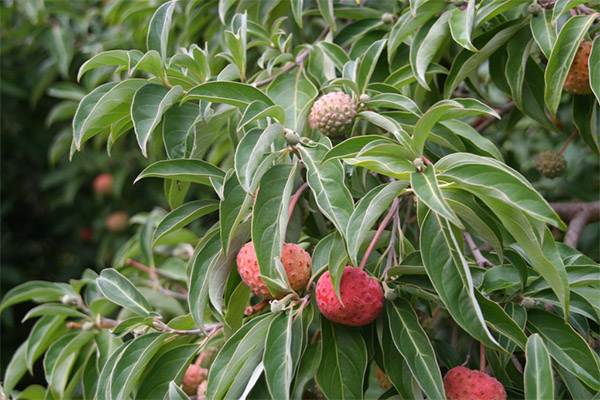
The cuttings are cut from an annual shoot, treated with a rooting stimulant and planted in a pot with a mixture of vermiculite and coarse sand. In 3-4 months, the seedling will let go of the roots, and it together with the soil is transferred to a large container.
For planting at home, prepare a mixture of garden soil, humus, peat and sand in a ratio of 1:1:1:1. You can take more humus and reduce the amount of peat. At the bottom of the pot make a few holes and pour drainage from broken bricks.
The tree should be on the sunny side, in summer the pot can be moved to a balcony or a bright veranda. From young shoots form a crown, otherwise the plant will greatly elongate in length. Strawberry tree does not like an excess of water, but without difficulty will survive a small drought. The next watering is done when the soil dries to 2-3 cm.
During the winter months, the tree enters a dormant period. In October, the pot is moved to a cool room or a covered loggia. In November, the houseplant, like a garden tree, will drop its leaves. During the winter, it is enough to water the soil once every 2 weeks. After 2 years, the kudraniya is transplanted to a larger container, changing the soil.
Interesting facts
- Kudrania has a powerful and branched root system. Farmers in southern countries plant this plant on unstable soils and slopes to fix the soil layer. Young shoots of kudrania are used to grow hedges.
- Strawberry tree leaves are an alternative food for silkworms. They are fed to larvae if silkworm leaves run out.
- The branches of the tree are the raw material for organic yellow dye. The bark of the strawberry tree is used to make paper.
- Kudrania wood has a beautiful texture. This light, durable material is the raw material for souvenirs, musical instruments and expensive furniture.
«Important: All information on this site is provided for informational purposes only. for informational purposes only. Before applying any recommendations, please consult with a health care professional. specialist before using any of the recommendations. Neither the editors nor the authors shall be liable for any possible harm caused by materials."

